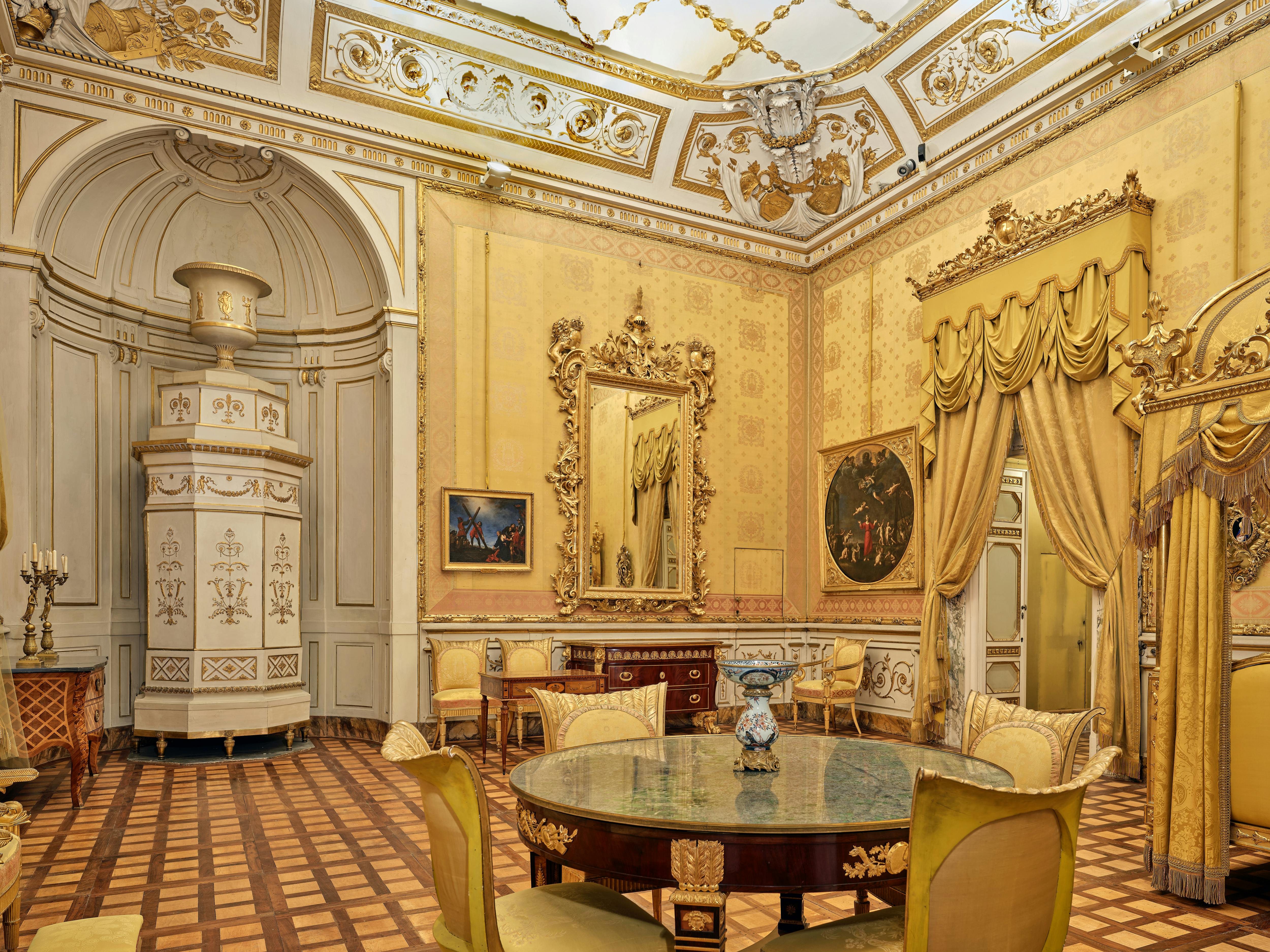King's Bedroom
According to the new organisation of the spaces of the Pitti Palace outlined by the arrival of Peter Leopold of Habsburg-Lorraine in 1765, the room was the first room in the Grand Duke's private apartments. As in the case of some of the rooms in the Queen's apartment, located on the façade, the decoration was renewed during the early 1760s and saw the intervention of Bartolomeo Portogalli, a plasterer from the Canton of Ticino, a nationality specialised in this artistic genre, who was joined by Domenico Ruschi from Parma. The circular stove dates back to the same Lorraine period, introduced here as in other rooms by Peter Leopold, according to a custom typical of the countries beyond the Alps.
If the French tapestry of the first decade of the 19th century is part of the innovations made by Ferdinand III of Lorraine, the most important changes to the furniture date back to the Savoy period as can be seen from the crusade shields of the House of Savoy surmounted by the royal crown visible on the curtain boxes and inserted in 1882 on the structure of the 18th-century bed.
The room also houses Baroque masterpieces of the Medici manufactures such as the holy water stoup and the kneeler that Cosimo III de’ Medici sent as a gift to his daughter Anna Maria Luisa, Electress Palatine, in Düsseldorf, both designed by Giovanni Battista Foggini and furniture of the following period of the most talented Florentine craftsmen. Among these is the small table finely inlaid with neoclassical motifs and a scene of the 'Victory of a Hungarian over a Turk', finished by the cabinetmaker Marco Calastrini in 1791, and the later chest of drawers which, made by the cabinetmaker Giuseppe Colzi in 1833, contained in its shaped top a previous semi-precious stone work with the 'Triumph of Europe' and allegorical representations of the Four Seasons.
